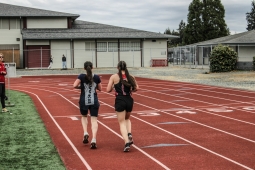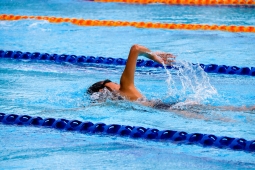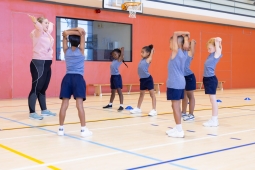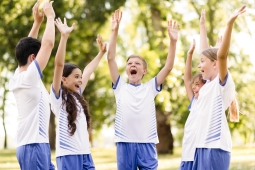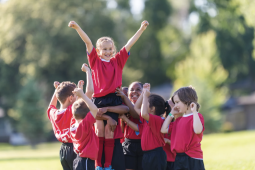A Move Toward Movement

Previously published in Volume 82, Issue 2
It's now widely accepted that physical activity can improve academic performance. There is growing evidence that physical activity can stimulate students' brains, resulting in higher levels of performance with cognitive tasks. Much academic research also points to the idea that if students have to actively process information, this could lead to deep learning and an increase in recall by a factor of ten (an idea known as constructivism). Concepts can be easily connected through active methods therefore pupils can create their own connections and in this context are able to develop the skills and make the decisions not only to improve their understanding and concentration in the classroom but also potentially outside the school environment to lead healthy and active lives.
Physical activity within schools has also been shown to help students develop confidence, social skills, peer interaction and all-around personal development. Indeed, the importance of friendship and peer groups as influential factors on the participation in physical activity are well documented.
Putting knowledge into practice
There is a growing argument in favour of using this type of knowledge to develop new and innovative solutions related to active learning.
As schools employ active methods more regularly, with a whole-school approach—one that links the teaching of academic subjects with physical activity—there’s an increasing body of evidence suggesting that this strategy can have a number of benefits. This philosophy embraces the concept of active learning as an effective pedagogical model and looks to promote active and fun sessions that target specific educational and physical activity-related outcomes within the school environment; for example, topics associated with literacy or numeracy could be taught through physically active games.
This is what the literature refers to as a models-based approach, which focuses on the development of context-appropriate and flexible programs at local levels. This active teaching model revolves around creating an active, fun environment where participants are learning through playing simple yet challenging movement games to aid their understanding. This enables the learner to be actively engaged, resulting in an increased ability to make sense of new knowledge.
Movement benefits all areas of teaching
Although historically this has been more widely used in PE and team coaching environments, I would challenge all teachers, not just those in physical education, to take a moment and consider how an active movement-style classroom could have wide-ranging benefits. We all know that children love to have fun, and playing games clearly fits that principle. It is also true to say in most cases that if a learner is actively engaged in a fun game, this could be an ideal vehicle to help foster the development of higher-order thinking, concentration and retention of information. Often, teachers are a little wary of playing games in the classroom because of negative perceptions around behaviour, control or health and safety. However, a move towards physical activity and movement in the classroom can have profound effects. Planning ahead for September, this could set a great precedent for the whole year. If you create an environment where both teachers and pupils see movement and games as a part of learning, then the benefits will be wide ranging.
In both teaching and coaching it is sometimes assumed that direct instruction may be the most appropriate style to ensure a level of understanding and competence. However, this approach could be potentially problematic when seeking to develop wider learning and independent skills. Clearly an active learning outlook stresses the importance of the latter point in that learning skills and independent learning are to be wholly promoted through an active games-based philosophy. There is a focus away from the competitive ego-based orientation and a move to a more task-centred climate where teachers, coaches and also parents can play a key role. Promotion of high levels of physical activity in schools is essential for so many reasons and active learning strategies with an emphasis on enjoyment can be an effective catalyst of this across the whole school.
Influence a generation's physical activity
An active learning games-based philosophy, along with a clear and carefully planned program of sessions that target specific educational outcomes, could have a marked effect. However it is still a contested area and education and health policy makers need more evidence. As practitioners in the field we have a good idea how the more active nature of practice and pedagogy can play a central role in positively influencing young people’s physical activity participation, movement skill proficiency and enjoyment of physical activity. This is where I would urge you to think specifically about how a more activity-focussed approach could help in your teaching environment. Not only could we be seeing better test scores, in turn we may be producing learners capable of having much more awareness of the benefits of movement and physical activity and in time influencing health and education policy both nationally and worldwide.
I call on you to start a move towards movement in your classroom and look ahead to September as your opportunity to play a full—and of course active—part in it.



